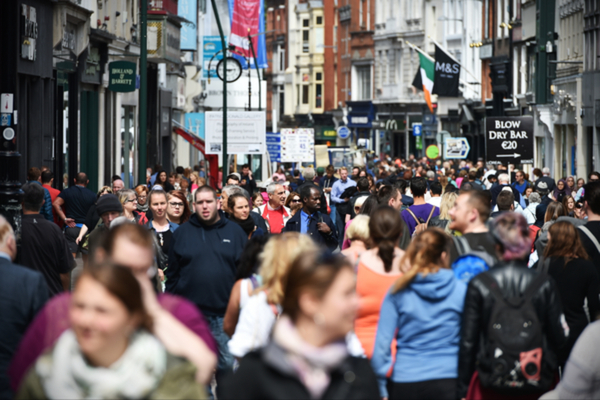The continuing battle for footfall between the high street, retail parks and shopping centres took an unexpected turn last month.
Major shopping centres such as Westfield Stratford City consistently broke footfall records last year, reporting in July that they had beaten the footfall record of the London 2012 Olympics.
Similarly, retail parks were reported by the British Retail Consortium in October to be the standout performers in terms of footfall.
As these were set against increasing pessimism of high street shopper numbers, specialised retail destinations seemed like the horse to bet on to weather fluctuations in shopper numbers.
However, earlier this week results from the BRC-Springboard Footfall and Vacancies Monitor showed that retail park shopper numbers in February dropped 1.6 per cent, compared to a healthy rise of 2.5 per cent a year before. Shopping centres also saw a 2.6 per cent decline in footfall.
“I‘d suggest in part the relative change is due to the nature of the locations and time of year. You have to build in the fact that, after Christmas, people are shopped out,” said Andrew McVicker, the director of retail property consultancy firm FSP.
“So, retail parks and shopping centres, by dint of their singular purpose, are notoriously quiet at this time.”
READ MORE: Retail parks see “steeper drop than normal” in footfall as Brexit impacts shoppers
This explanation doesn‘t account for the year-on-year decline reported by BRC-Springboard, but McVicker argues that in the long term they will fair better.
“The central problem for the high street is its fragmented ownership. This means there is no consistency of approach across individual towns and high streets in general,” he said.
“So, in the longer term, shopping centres really are better placed to react to what the market wants.”
Despite this there are some problems arising for retail parks and shopping centres in the long term.
Lore Oxford from consumer behavior analyst firm Canvas8 believes these destinations are losing their experiential edge.
“Shopping centres in particular used to act as a social meeting place, especially for younger people who would meet with friends and browse together, but the rise of social channels has changed this somewhat,” she said.
“Now these groups are constantly in contact via the likes of WhatsApp and Facebook groups and, combined with the ease of online shopping, the overall experience has changed considerably.
“We‘re also seeing a rise in demand for ‘authenticity‘ and ‘indie‘ stores, which are rarely present in shopping centres and retail parks, but can be found on the high street (or what at least look like indie stores). Big brands are catching onto this shift.
“Look at Southwold Books or Harpenden Books in Hertfordshire; they might sound like family-owned independent book shops, but they‘re actually ‘incognito‘ stores from Britain‘s biggest bookstore chain Waterstones.”
A factor originally seen as a selling point, has now become a draw back for retail parks. Specialised retail destinations sell themselves on their scope, and because of their need for huge spaces they are often located “out of town”.
READ MORE: Is the high street fighting back?
Oxford said both shoppers and retailers were beginning to prefer the convenience of the high street.
“A decade ago it was all about big; grocery giants rolled out super, hyper and mega stores in out-of-town spots and sprawling shopping centres alike. But customers are starting to shop small again,” she added.
“With more and more people migrating to cities, the out-of-town big box store has fallen out of favour.
“It‘s why IKEA opened IKEA Urban in Hamburg; the 18,000sq m store (while still huge) pales in comparison to IKEA’s average size of 28,000sq m.”
McVicker believes this is only relevant for some retailers who need footfall drivers to thrive.
“Our research suggests that there‘s definitely an increased divergence in the use of out-of- town parks and centres,” he said.
“We‘re seeing operators such as Wickes concluding they don‘t need to be close to footfall drivers like fashion to do well.
“So, they don‘t need to pay the high rents found at a fashion park. This in turn creates a degree of greater specialism between bulky goods parks and fashion parks.”
Similarly, in what used to be seen as a huge benefit for shopping centres and retail parks, the ability to create a singular shopping and leisure experience could be working against them.
Omnico chief executive Mel Taylor thinks that the multifaceted element of the high street could hold the edge.
“The figures are disappointing, but unfortunately, many retail parks fail to offer a more rounded leisure experience that tempts consumers away from shopping online,” he said.
“High streets, by contrast are developing into multi-faceted destinations that meet the increasing demand for hospitality and lingering leisure experiences, fighting back against the predictions of their demise.
“Successful shopping centres and malls must have an excellent breadth of hospitality outlets, often in combination with outright leisure facilities and manage it all so that it feels like a single, engaging experience even though many different retailers and operators are involved.”
Click here to sign up to Retail Gazette’s free daily email newsletter


















